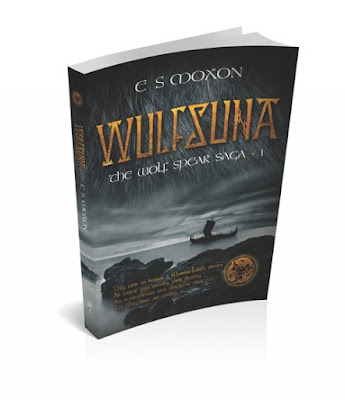
I begin with visual basics - hair/eye colour, height and build - so that when I am writing down first draft scenes and dialogue I can at least add simple descriptions. I consider their role: are they a warrior, a Druid, a peasant or noble? All of these suggest their standard of living and perspectives on life, which add to their personalities. If they have relatives that will be mentioned in the same novel, I write a brief background description of each relative and what their relationship was like with this individual; this adds depth to their upbringing and familial interactions.
Cultural, spiritual and linguistic heritage are all aspects of someone's character that can define them. Although all my characters speak English in my novels, I model their language use as much as possible on their mother tongue. For instance, my Saxon characters use dialogue with their roots in Old English words of Germanic origin [i.e. amid, become, wend, shield]. The sounds of these words add a Saxon flavour to their speech. Likewise, I have Romano-British characters who would be speaking an early form of Welsh, the P-Celtic language. In modern Welsh there is a word for yes [ie] but you can say 'yes' in many forms depending on how you answer a question:
e.g.
Does she understand? [Ydy hi'n deal?] Yes (she does). Ydy.
Are you coming? [Ydych chi'n dod?] Yes (I am). Ydw.
Were you there? [Oeddech chi yno?] Yes (I was). Oeddwn.
When the character responds with these answers of 'Yes she does' or 'Yes I was' despite being written in English in the novel, these formulate a hint of the Welsh grammar structure that this character would utilise in speech. Another layer or flavour if you like, that adds to the realism of the character.
Culture also denotes what social etiquettes a character is likely to follow, while spirituality forms their beliefs in certain morals, type of deity worship and afterlife concepts. Insert political viewpoints in relation to the period in which you are writing and you have even more material to play with. For a Druidic character, I have examined the sacrificial and divination practices of the Order. Reading the future from the entrails of dead animals and humans gives a grim insight into the beliefs held by this spiritual group. Another method of divination called 'imbas forosna' is to divine by chewing on raw flesh and placing your hands on your cheeks as you fall asleep. The future is then supposedly revealed through dreams. This presents the possibility of including all the senses in descriptive writing, bringing your reader within the character using touch, smell, taste, sight and sound.
Another interesting tool I use is the inclusion of animal traits in certain characters. The obvious one (writing about a tribe called 'Wolf Sons') is aspects of wolf behaviour. These wild canines show dominance through posture, rather than using aggression and have immense stamina and strength. They follow a strict social status within their family groups. Bestowing these attributes onto a character is more of a subliminal connection, but one that still can seep through to the reader and hopefully create a more intimate relationship with the character.
How do you begin to build a character?
What tools do you use to define them?
Writing as ‘E S Moxon’, Elaine's debut historical fiction adventure ‘WULFSUNA’ was published January 21st, 2015 and is the first in her Wolf Spear Saga series. She is currently writing her second novel, set once again in the Dark Ages of 5th Century Britain, where the legendary Saga ensures a Seer and one named 'Wolf Spear' are destined to meet. You can find out more about Elaine’s novels on her website or follow her on Twitter or Facebook.
Elaine lives in the Midlands with her family and their chocolate Labrador.
~ ~ ~
Blood, betrayal and brotherhood.
An ancient saga is weaving their destiny.
A treacherous rival threatens their fate.
A Seer's magic may be all that can save them.






Visualizations are definitely key. I've found that readers will often ignore all other background info and focus on a key physical feature or two.
ReplyDelete